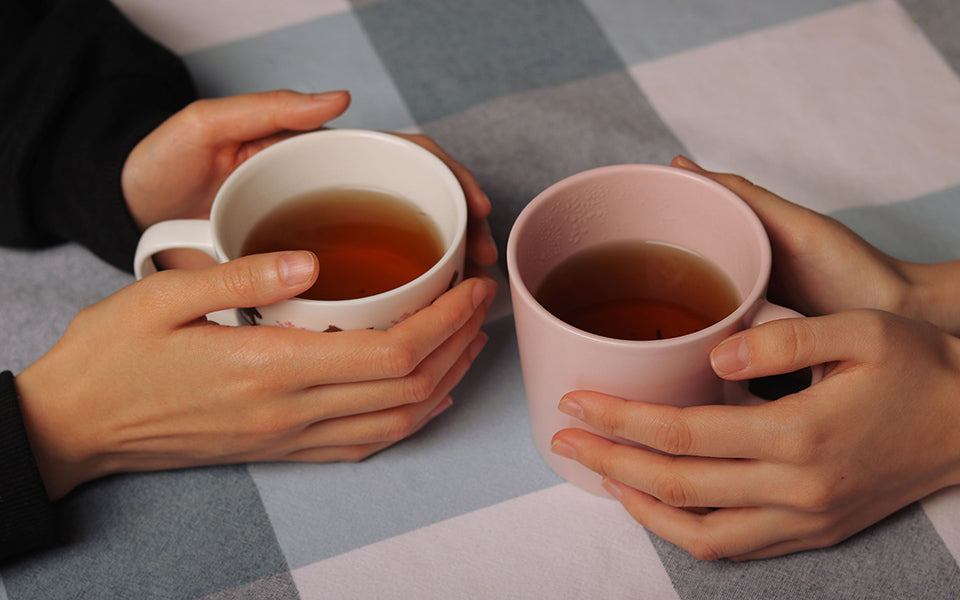
For thousands of years, people have turned to home remedies and natural remedies to relieve pain. It may be hard for
you
to believe that a sip of your favorite tea can actually help heal your body, but a growing body of research suggests
that anti-pain teas can help treat chronic conditions. Here are the best teas to treat pain.
Tea Good for Pain
Pain in the body has an important role. When you are injured, your body sends fluids and other chemicals around the wound to protect it from further damage. If you've ever sprained an ankle, you know that this pain can make it almost impossible to put weight on your ankle, preventing further injury to your ankle.
In most cases, this protective response subsides when you rest for a few days. Sometimes, however, pain can become chronic. Chronic pain occurs when the protective response is overdone. This lengthens the body's response to injury far longer than it should have stopped. The immune system may turn on to continue the cycle, but sometimes pain occurs without stimulating an injury or condition.
Either way, when pain becomes chronic, all sorts of things can happen. Pain is associated with many of the most serious health conditions. Here are five of the best teas for pain.

Green Tea
Green tea is one of the most studied herbal teas for anti-pain effects. Green tea has anti-pain properties and has been shown to reduce pain and improve heart health.
The catechism in green tea, especially biotechnological gallate, work with flavonoid to prevent free radicals from triggering or increasing cell damage, which can lead to pain.
Green tea is an excellent, delicious way to counteract the effects of stress. It improves cardiovascular function, lowers cholesterol, and provides energy without the neurotic effects coffee can sometimes have. Overall, green tea has also been linked to a lower risk of diabetes, cancer, and heart disease.
Green tea comes in the form of leaves, but matcha is also available in powder form. Most people new to green tea prefer the mild taste of leaf tea, but matcha is a powerful antioxidant with many benefits. To get the most out of your leafy tea, you should choose green tea that is rich in EGCG.

Ginger Tea
Unlike the leaves and powder of green tea, ginger tea is made by drying the root and grinding it into a powder (or cutting it into fresh pieces for tea). Like green tea, ginger is widely studied as an effective treatment for pain and inflammation. Ginger and gingerol are anti-pain and anti-oxidative stress compounds in ginger.
In addition to fighting pain from inflammation, ginger tea may also protect against oxidative stress-related diseases, including heart disease. Choose the pre-packed ginger tea that works best for you, depending on whether or not you like the taste of ginger. If you don't like spicy, there are plenty of herbs to mask the ginger.

Rose Hips
Rose hips are coral-red, round, edible pseudo fruits left behind when the rose bush has withered. They have been used as herbal remedies for over 2,000 years because they are rich in antioxidants, including beta-carotene and vitamins C and E. Rose hips contain phenol compounds, which are powerful anti-pain antioxidants that protect your cells from damage. Make rose hip tea by using ten whole, fresh or dried rose hips, mashed or mashed. Allow the solids to drain for 6-8 minutes and add honey if desired.

Turmeric
Although not a leaf, turmeric is a powerful anti-pain root that has been used as a medicinal tea for thousands of years. Turmeric has an earthy taste and taps into the power of cur-cumin, a well-studied anti-pain compound. Belonging to the same family as ginger, turmeric is a major ingredient in Ayurveda medicine and is becoming increasingly popular in a preparation called golden milk.
Turmeric showed anti-pain properties in six human trials. This is important because studies demonstrate turmeric's effectiveness outside the lab and in humans. Turmeric has been found to be effective in reducing the pain and pain of arthritis. Its antioxidant properties and metabolic regulation have been found to help treat other inflammatory diseases, such as diabetes and Alzheimer's.
You can buy fresh turmeric root in the produce section of some supermarkets. Remember, turmeric is highly stained and has been used as a vibrant yellow dye. Protect the cutting surface and your hands as you prepare it! Turmeric powder is used to make pastes and flavor foods. This can be found in the bulk goods section or spice section of the supermarket.
The Bottom Line
Tea is a delicious and easy way to enjoy the benefits of plants, herbs, and spices. Try green tea, rose fruit, ginger, and turmeric to reap their benefits. With so many varieties and flavors to choose from, it's no wonder tea is one of the most popular drinks in the world.
































Leave a comment
This site is protected by hCaptcha and the hCaptcha Privacy Policy and Terms of Service apply.